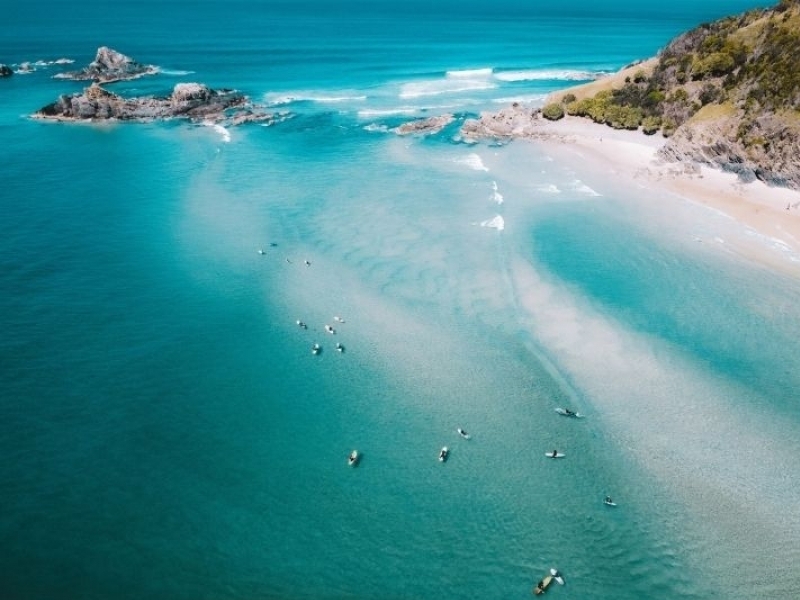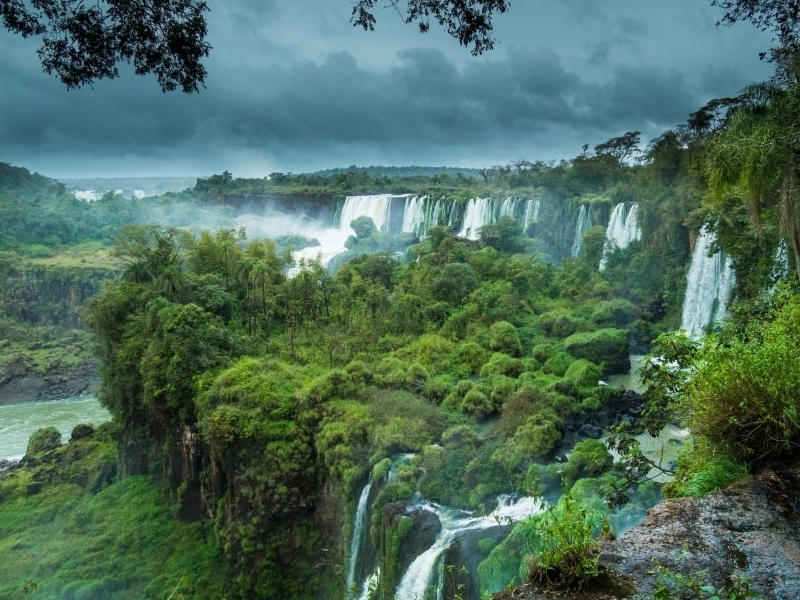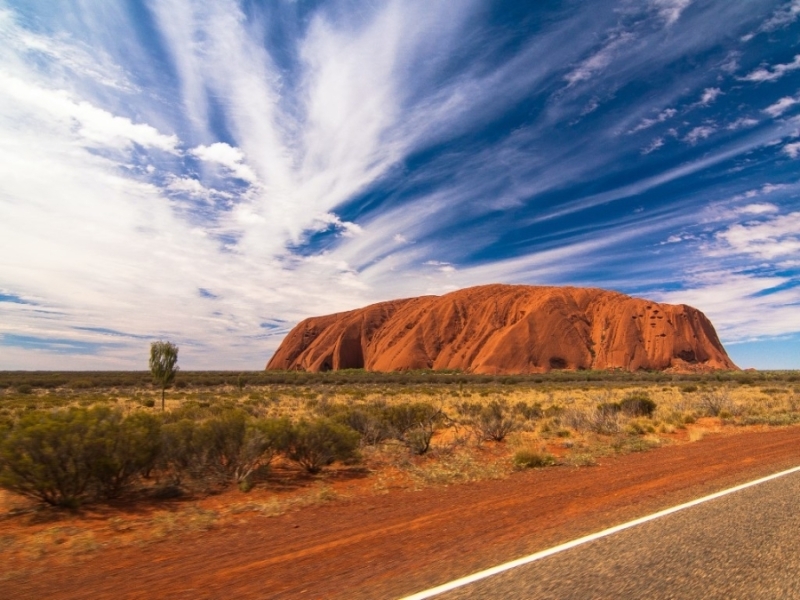News and Testimonials

10 incredible places to learn to scuba dive
Dreaming of hitting the open water in your scuba gear and getting your diver certification?
With a combination of idyllic conditions and reputable dive schools offering PADI or SSI qualifications, we’ve narrowed down the top spots to get certified to scuba dive – from the Caribbean to the Maldives, and everywhere in between.
Here are 10 of the best places in the world to learn to scuba dive and then explore.
Gili Trawangan, Gili Islands, Indonesia
The diving: Indonesia boasts an aquatic Babylon – the warm, clear waters around Gili Trawangan (part of Lombok) are home to more than 3500 marine species including reef sharks, turtles, pygmy seahorses and colorful corals.
Why learn here: competition between mostly European-run dive operators (like Manta Dive and Blue Marlin), keeps course fees in check on this buzzy little island, which is also great for snorkeling.
When to go: Gili Trawangan diving is year-round, though many travelers avoid the November to April rainy season.
Byron Bay, New South Wales, Australia
The diving: just 1.5 miles (2.5km) offshore, Julian Rocks is one of Australia’s best dive sites. Like a mini Galapagos, the mixing of tropical currents and cooler waters around this volcanic bluff attracts a bounty of marine life including turtles, rays, several shark species and over 1000 fish species.
Why learn here: the water just gets colder south of Byron, and this hip surf town is more accessible to budget travelers than the Great Barrier Reef. Both Byron Bay Dive Centre and Sundive offer competitive course rates.
When to go: diving is year-round, with summer drawing leopard sharks and manta rays. Cooler winter waters lure endangered grey nurse sharks, and humpback whales are commonly sighted from May to September.
Ko Tao, Thailand
The diving: Thailand’s scuba diving headquarters Ko Tao is also one of the few places on earth where it’s possible to spot whale sharks (March to April) along with tropical fish, reef sharks, rays and barracuda during your dive course.
Why learn here: while Ko Tao’s party scene has caught up with its diving scene, calm, shallow sites like Japanese Gardens still make it an excellent choice for nervous novices. Popular long-standing operators include Ban’s and Coral Grand.
When to go: diving is year-round, with July to September offering the best visibility. Some outfits close during the November to December rainy season.
Dahab, Red Sea, Egypt
The diving: with stunning coral habitats literally steps from the beach, relaxed Dahab offers some terrific shore diving and, for advanced divers, there’s also the Blue Hole.
Why learn here: off-limits for years due to security risks, this less chaotic alternative to Egypt’s main dive center Sharm el-Sheikh, 56 miles (90km) south, is making a comeback. Established dive outfits including Poseidon and Big Blue have good reputations. Bolstered by a year-round visibility of 30m, the Red Sea is ideal for beginners.
When to go: diving is year-round, but most travelers find it more comfortable to avoid the blistering heat from May to September.
Caye Caulker, Belize
The diving: dwarfed only by Australia’s Great Barrier Reef, the Belize Barrier Reef Reserve System lies less than a mile from Caye Caulker. Its countless dive sites house everything from delicate sea fans to majestic coral gardens, but Belize's iconic Great Blue Hole, reached on a day trip from Caye Caulker, is best left to advanced divers.
Why learn here: course fees at this idyllic, low-key coast are among the highest in Central America, but the diving here is by far the best. Enquire at Frenchie's.
When to go: diving is year-round, with conditions near perfect around May. During the rainy season from December to April, seas can be choppy.
Utila, Bay Islands, Honduras
The diving: backpacker haven Utila enjoys access to the southern tip of the stunning Mesoamerican Barrier Reef System. Overfishing has had an impact on marine life density around Utila, but new divers don’t tend to notice.
Why learn here: while the diving is arguably better at neighboring Roatán, Utila courses are phenomenal value – sign up with Underwater Vision or Utila Dive Centre. On Roatán, check out Ocean Connections.
When to go: diving is year-round, but it’s worth visiting between March to April or September to December for a chance to spot whale sharks.
Santa Cruz, Galapagos Islands, Ecuador
The diving: located at the convergence of three ocean currents, the otherworldly Galapagos archipelago offers a truly unique diving experience. There’s not a lot of coral, but the (friendly) hammerhead sharks, sea lions, turtles, marine iguanas, rays and such should keep you entertained.
Why learn here: with its strong currents and chilly water, Galapagos diving can be challenging. But reputable dive outfits like Scuba Iguana and Macarron’s Scuba in Puerto Ayora on the main island of Santa Cruz host their courses in the calmest spots. Freshly certified, you can shark spot at advanced sites like Gordon Rocks.
When to go: diving is generally year-round, but January to May offers the best weather for those planning to cruise in the region.
Port Vila, Efaté, Vanuatu
The diving: boasting easily accessible wrecks along with brilliant coral reefs, Port Vila provides the perfect warm-up for those hoping to tackle the SS President Coolidge, one of the world’s top wreck dives, over on Espiritu Santo island when certified.
Why learn here: perfect for wannabe divers with time constraints, Vila outfits, including Nautilus and Big Blue, run shorter open water courses. And resort-style lodgings, most with their own dive outfits, abound.
When to go: diving is year-round, with visitor numbers increasing from April to October when the water is particularly calm and clear.
Malapascua Island, Philippines
The diving: located at the center of the world’s "coral triangle", the Philippines are considered to house the richest concentration of marine life on the planet, with 5000 species of clams, snails and mollusks alone. Most divers head to Malapascua Island, off Cebu, for its famous thresher shark dive, which is a great incentive for completing the required Advanced Open Water course.
Why learn here: the main attraction to Malapascua is its impressive array of dive sites, which helps to keep you focused on your studies. Among its many dive centers, Evolution and Thresher Cove Dive Resort are standouts.
When to go: diving is year-round, but the November to June dry season offers the warmest water and best visibility.
North Male Atoll, Maldives
The diving: the best explored region of the Maldives, North Male Atoll is riddled with brilliant dive sites. Coral remains healthy despite widespread bleaching, but abundant tropical marine life is the big ticket, buoyed by warm water and great visibility. Popular sites include Banana Reef, Kuda Haa and Manta Point.
Why learn here: as most resorts offer good dive courses, choosing one will likely be determined by your accommodation budget. With the biggest dive center in the region, Kuredu Island Resort is a good choice, while those seeking luxe solitude may prefer Ocean Paradise Dive Centre at Robinson Crusoe-style Gili Lankanfushi.
When to go: year-round diving is possible, but the best conditions prevail from November to April, when seas are calm and ocean currents attract manta rays.
Know before you go: pre-dive course checklist
PADI or SSI are the world’s two main diving certifiers, recognized globally.
Be sure to check in with your dive team on their COVID-19 safety protocols, especially what that means in terms of gear use.
Do your research – it’s important to ensure your instructor is legally certified and their dive gear is up to scratch. Also, check where the closest decompression chamber is located in case of emergencies.
It’s recommended you don’t fly for at least 24 hours following a dive to prevent decompression sickness.
Check if your preferred dive outfit offers an e-learning component of the course you can complete before your visit, to free up more diving time.
Strike a bargain – many outfits offer free or discounted accommodations if you dive with them.
Research responsible and sustainable diving etiquette and practice it wherever you dive.
Source: https://www.lonelyplanet.com/articles/best-places-to-learn-to-dive







